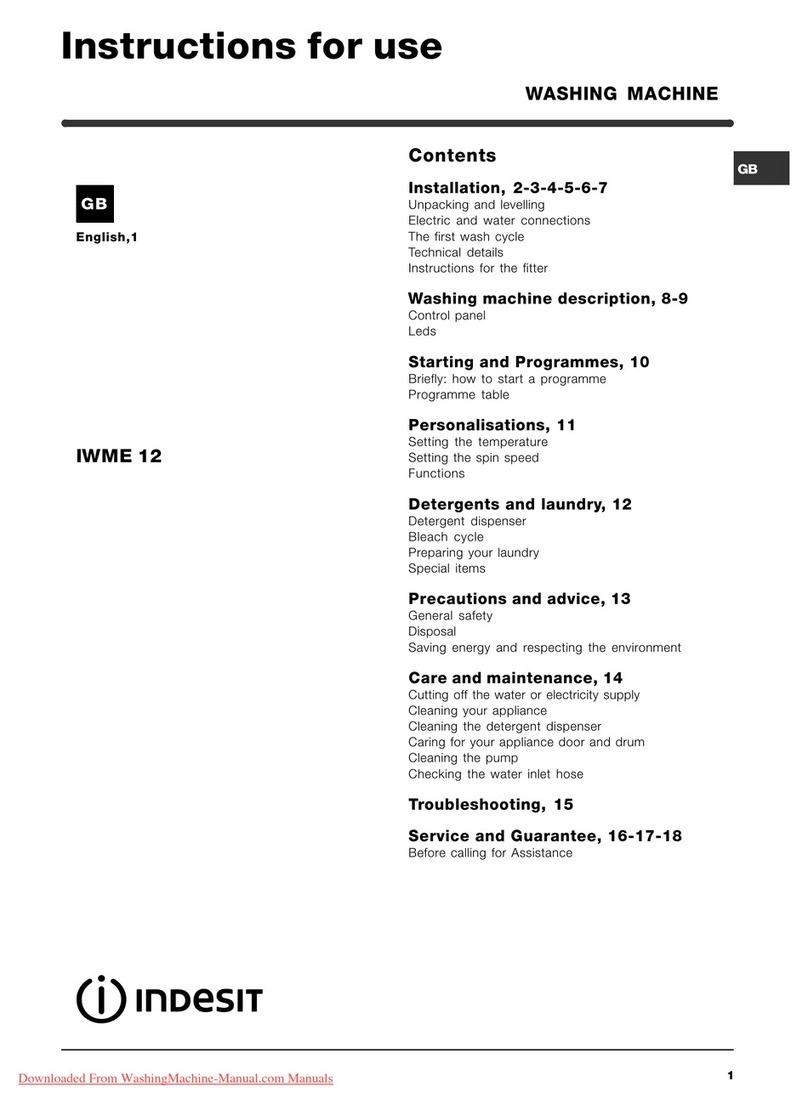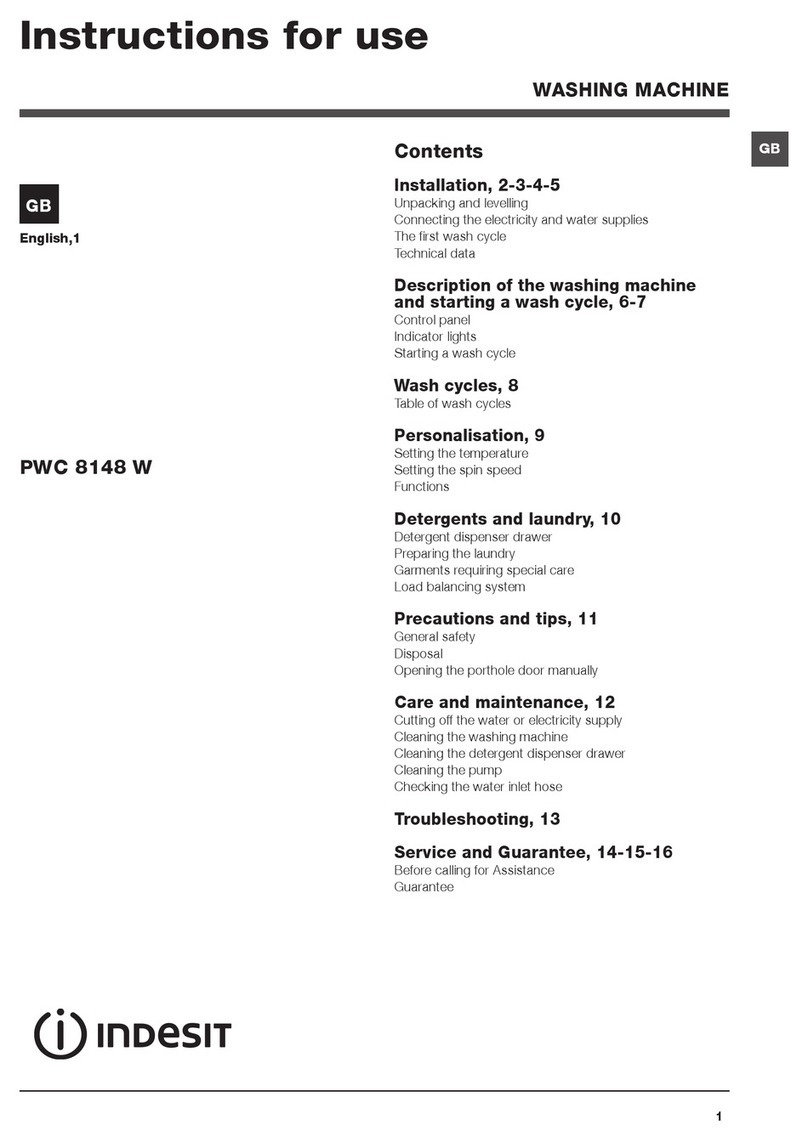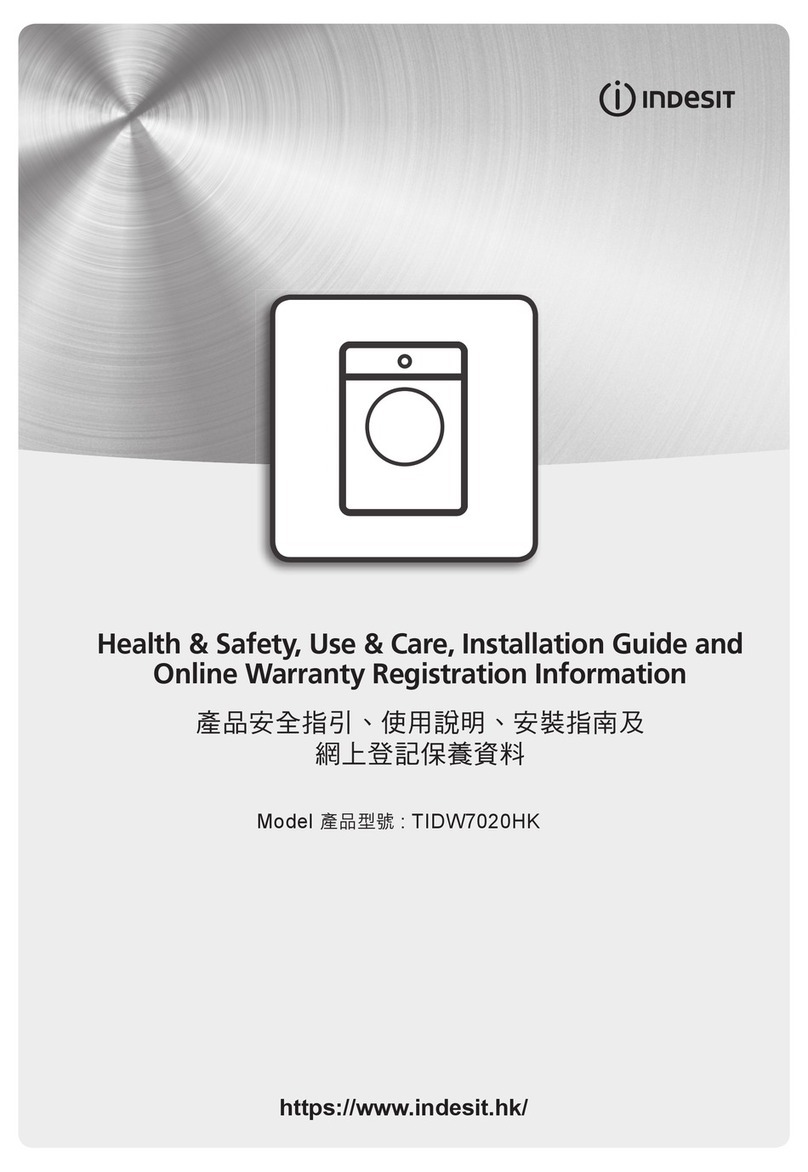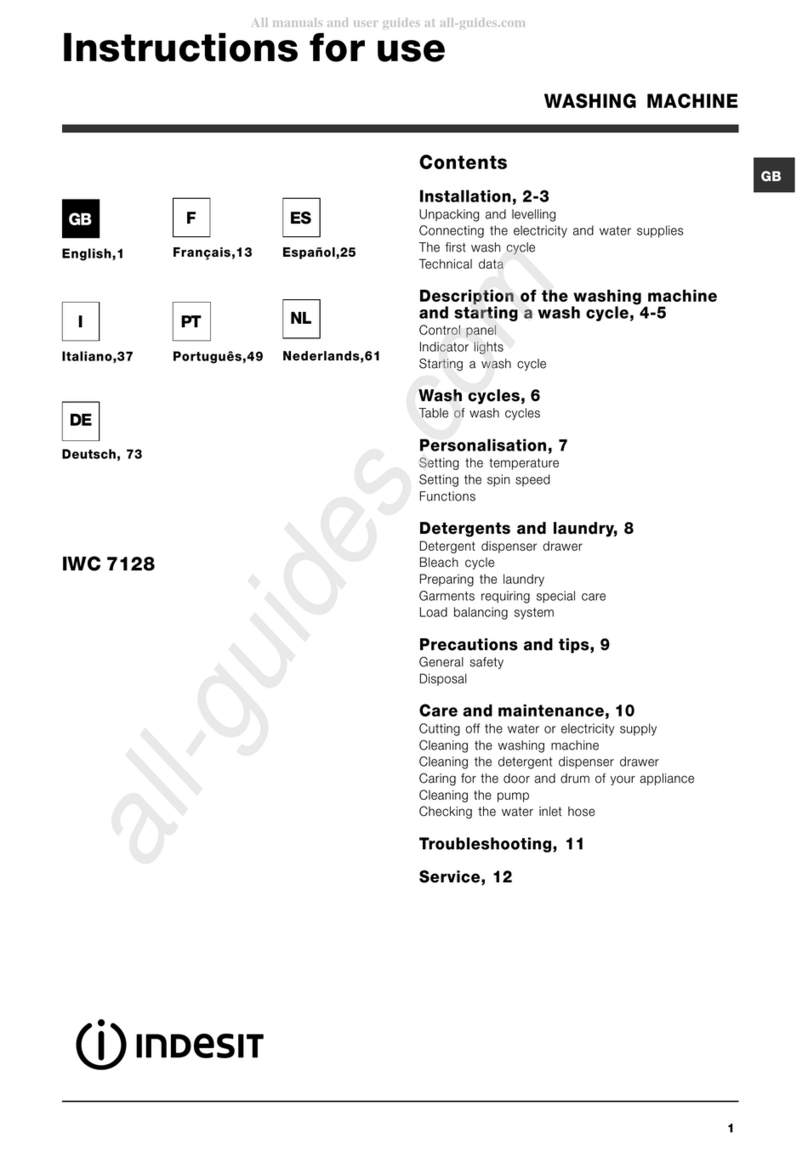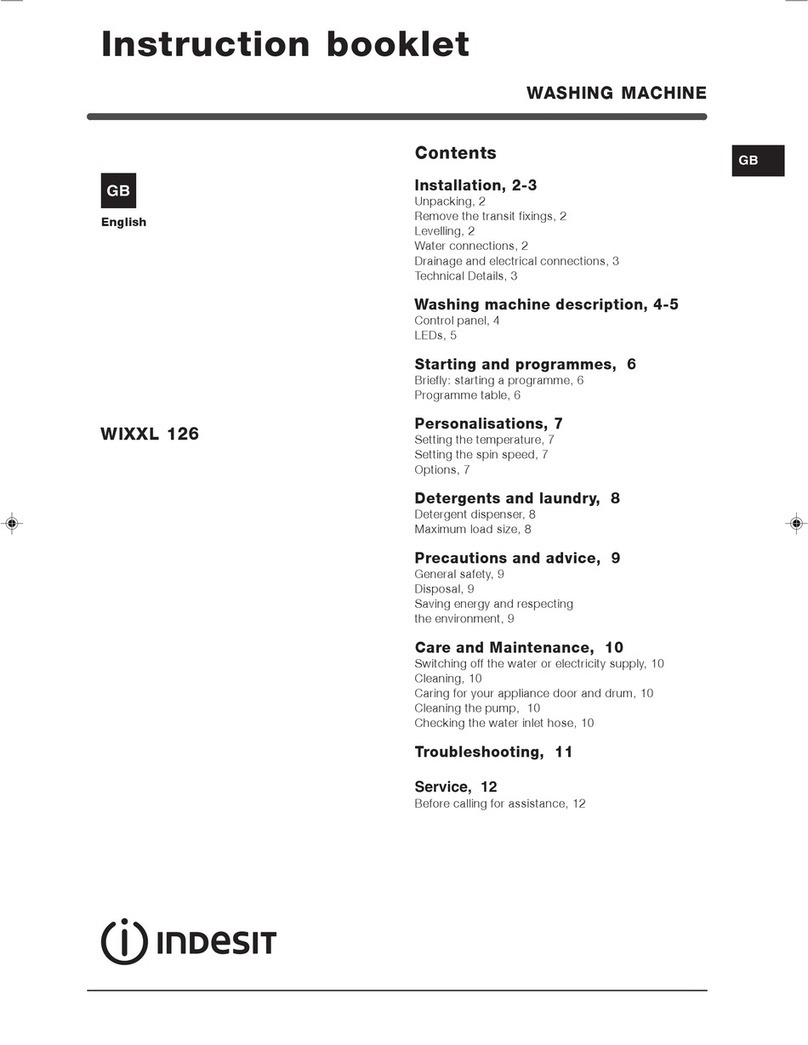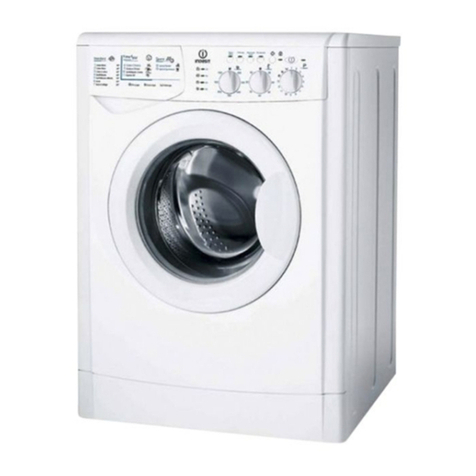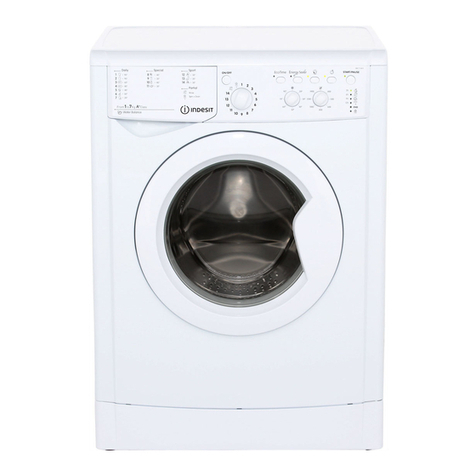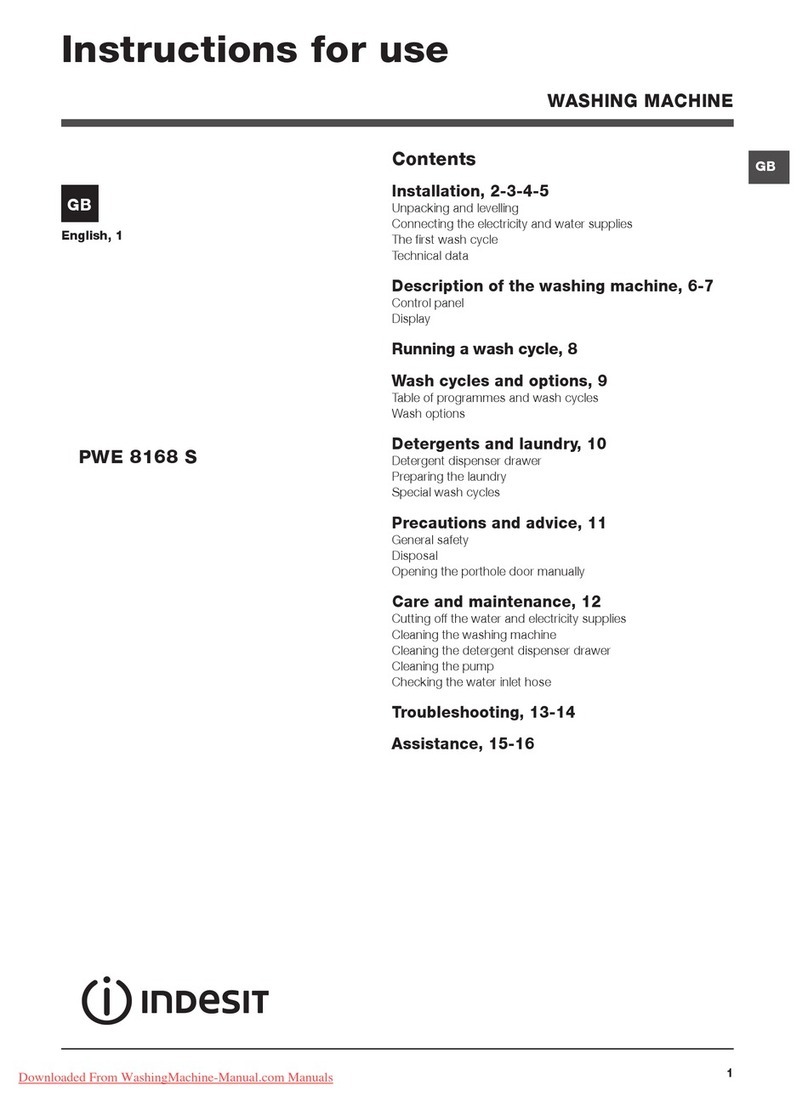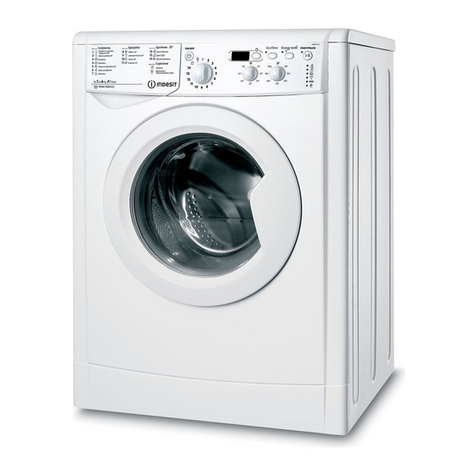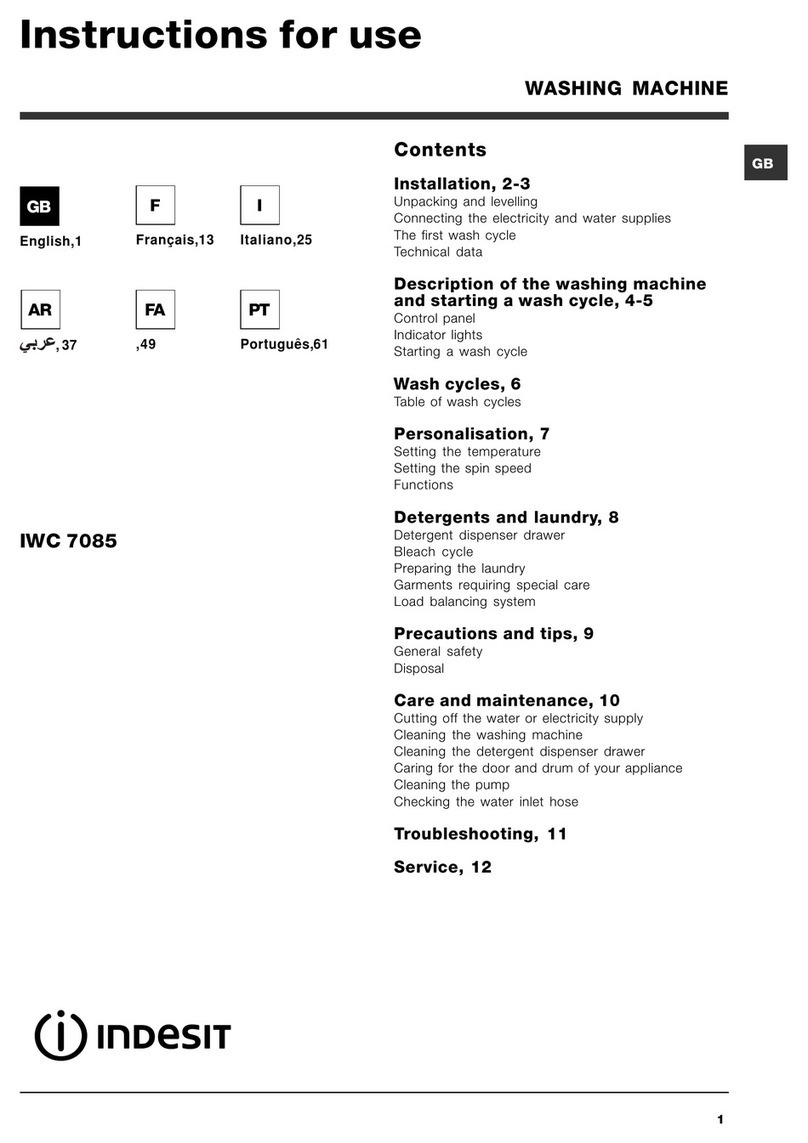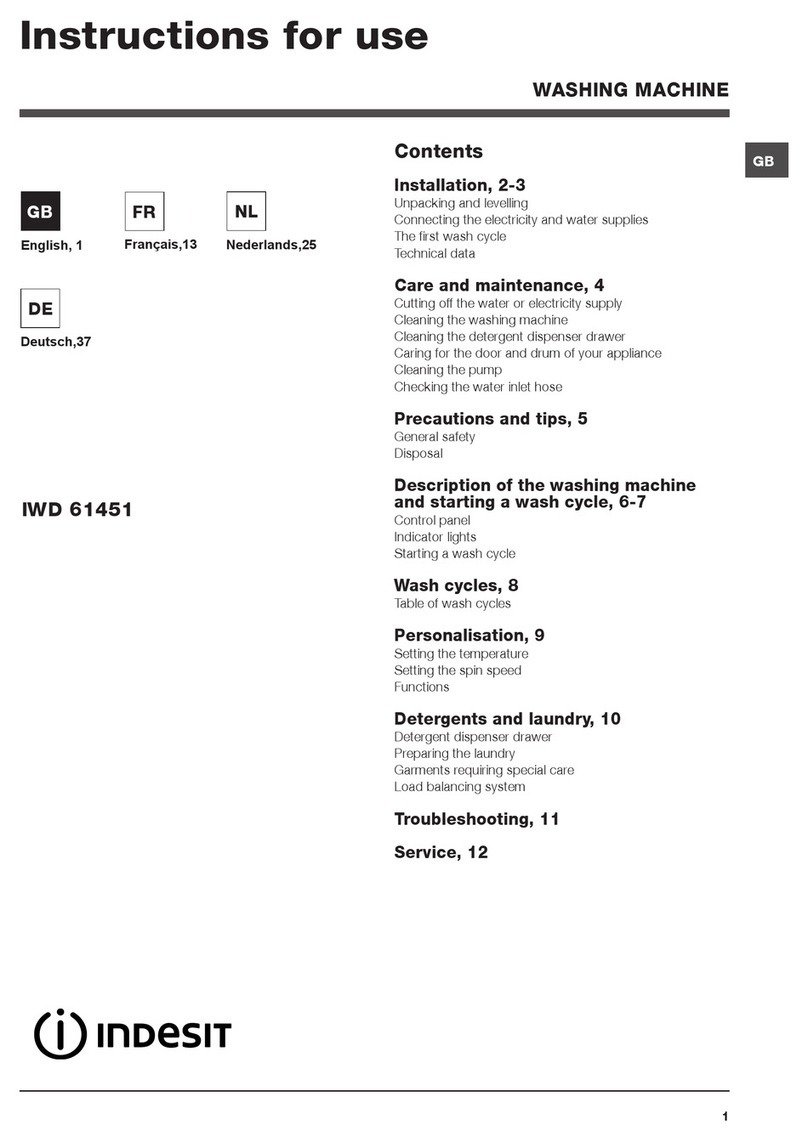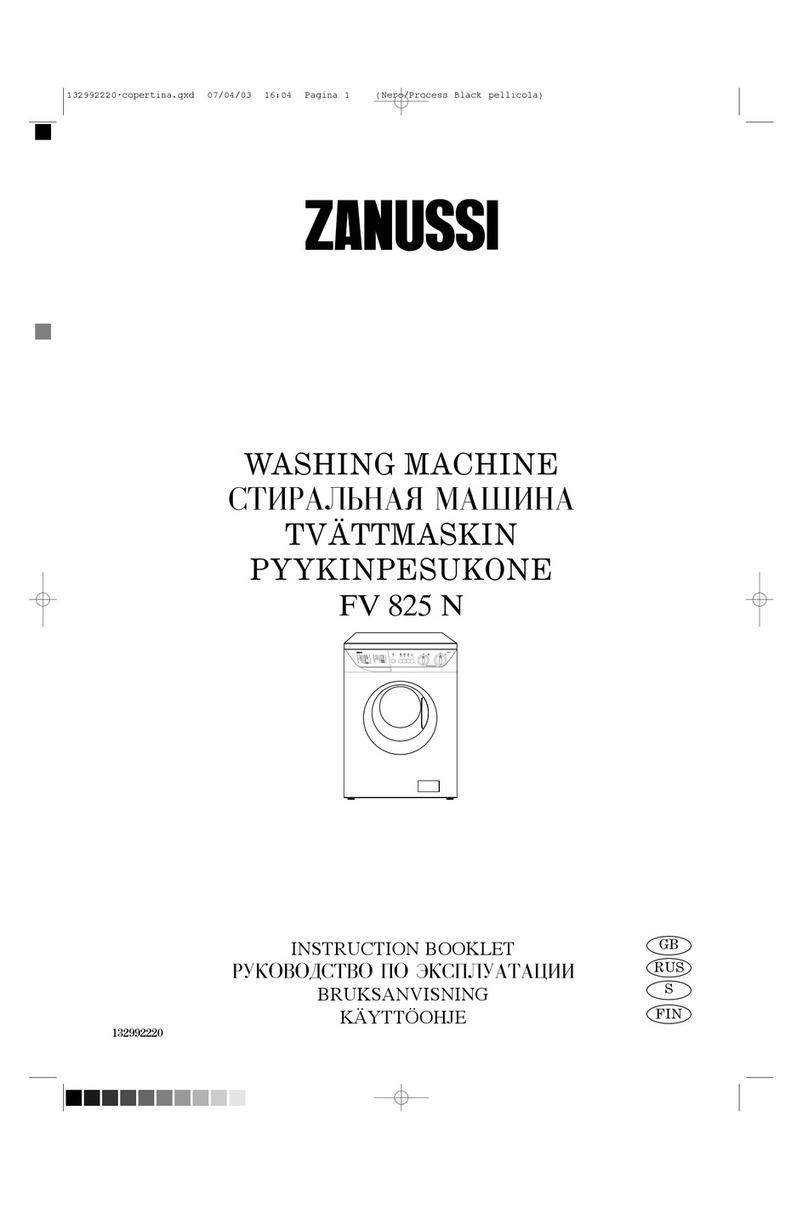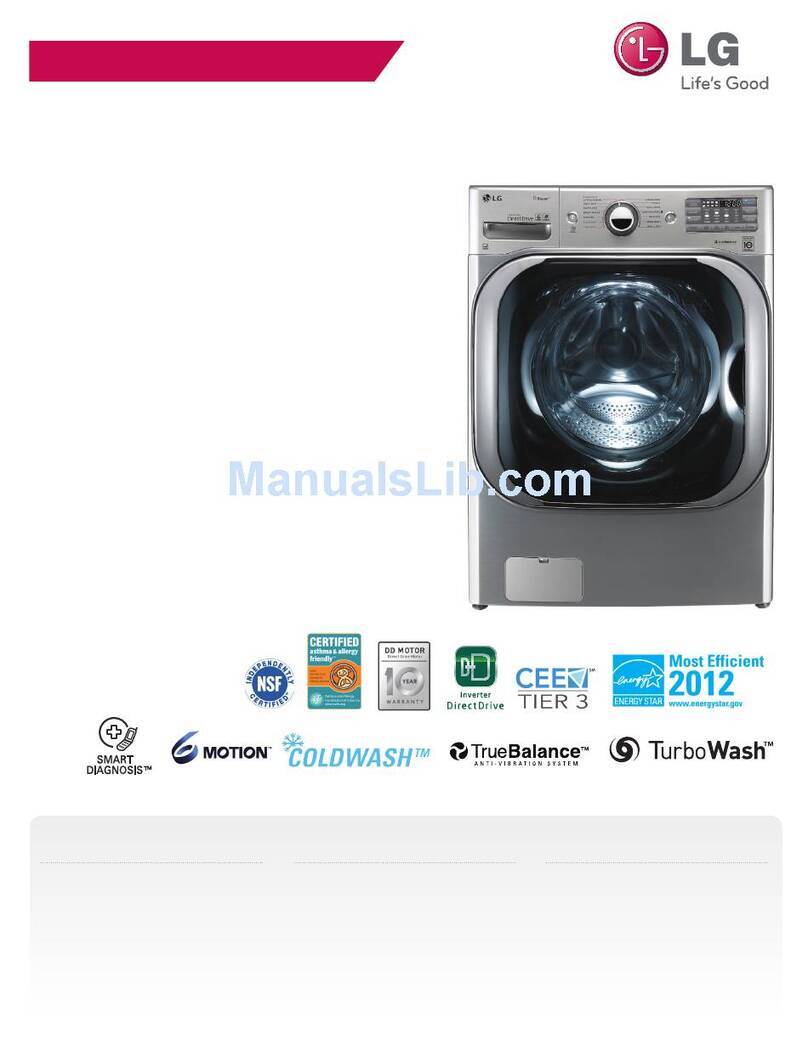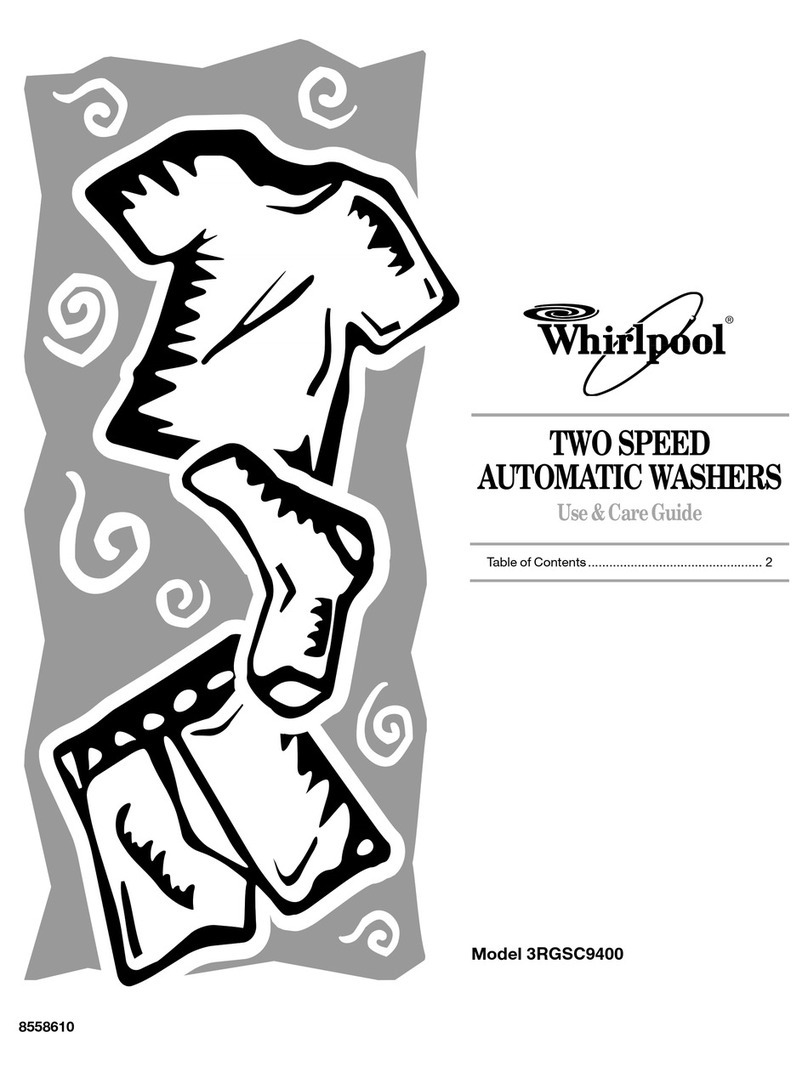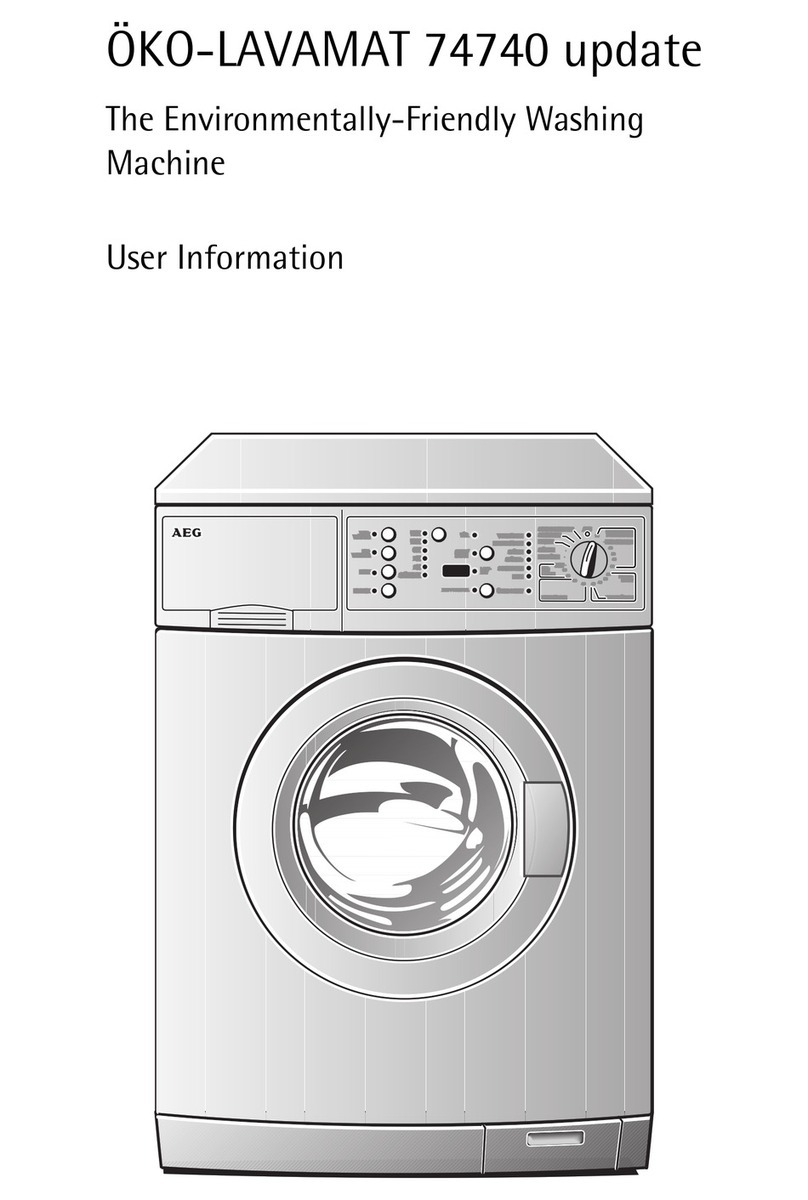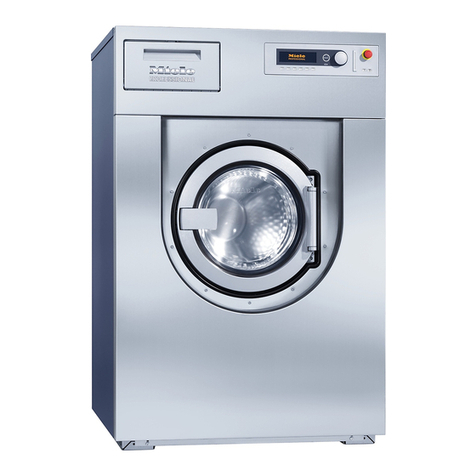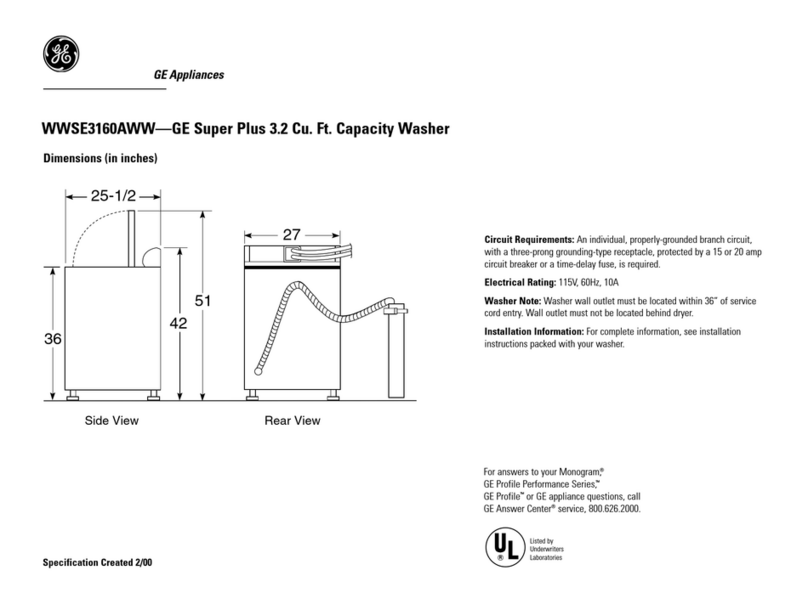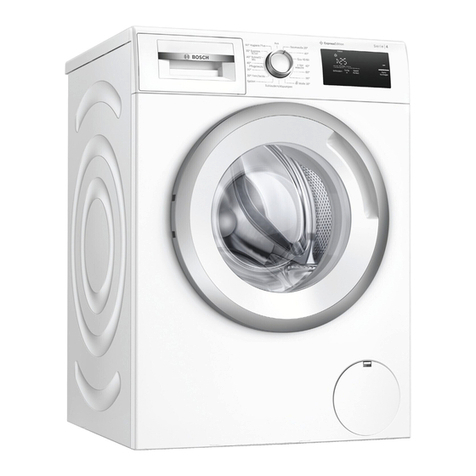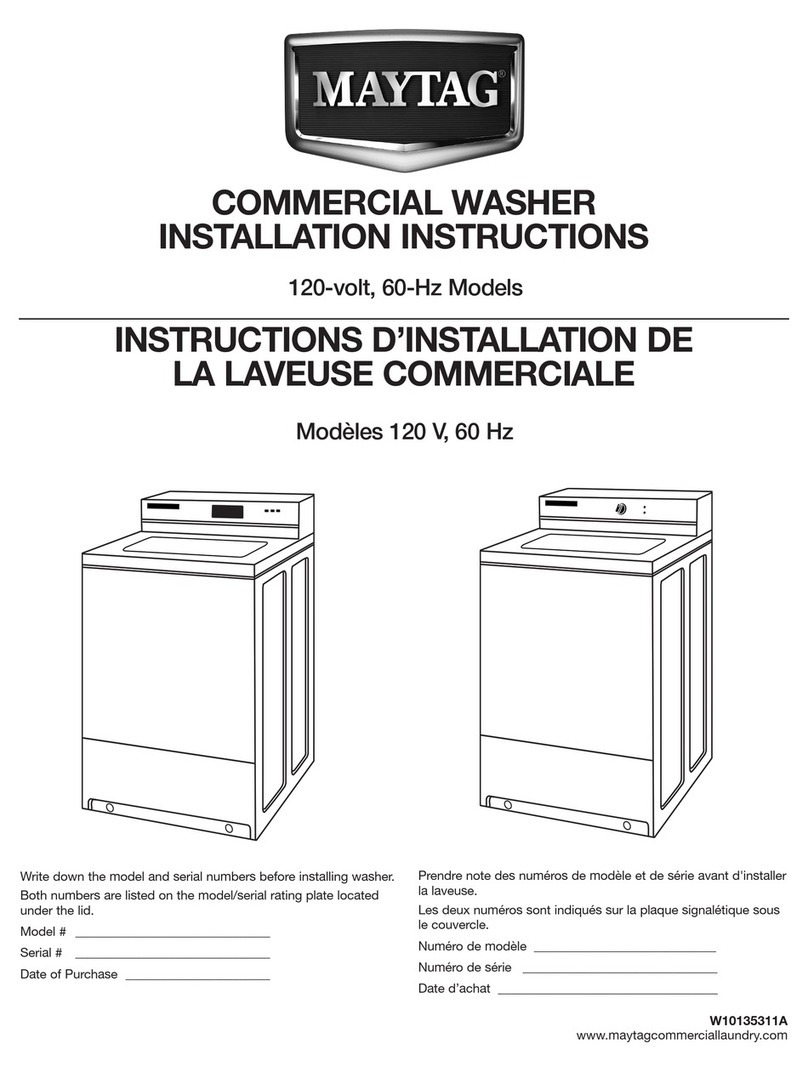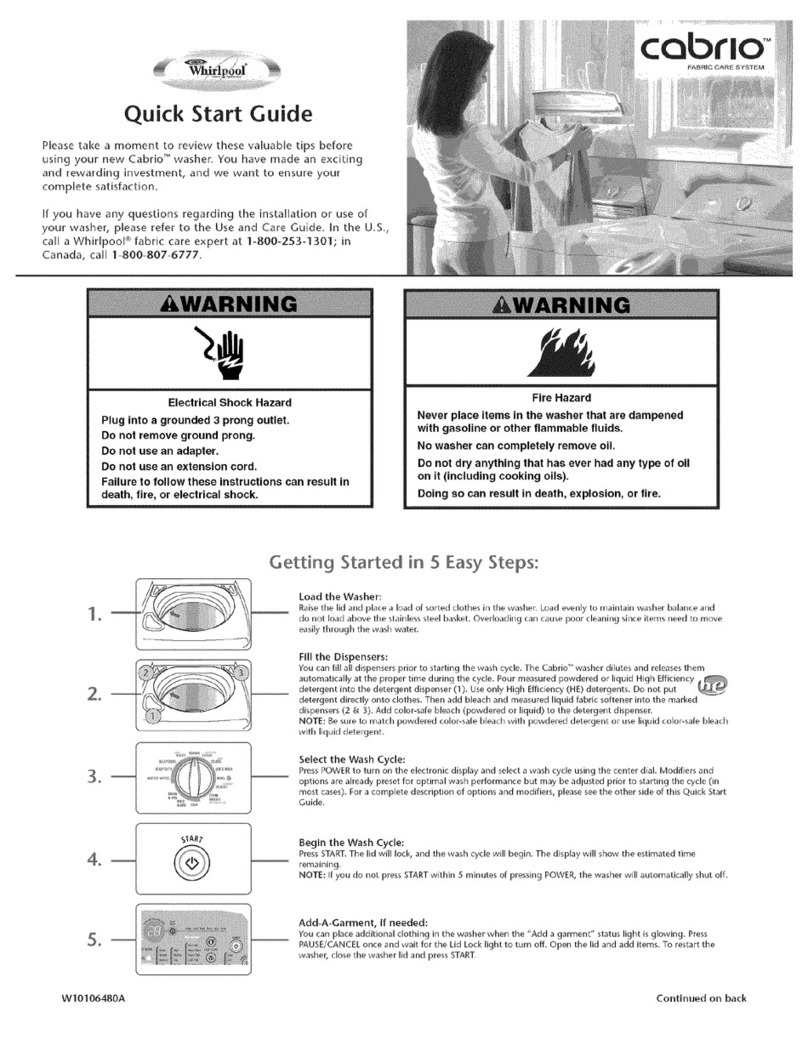10
GB
Detergents and laundry
Detergent dispenser drawer
ood washing results also depend on the correct
dose of detergent: adding too much detergent will not
necessarily result in a more efficient wash, and may in
fact cause build up on the inside of your appliance
and contribute to environmental pollution.
Do not use hand washing detergents because these
create too much foam.
Open the detergent
dispenser drawer and
pour in the detergent or
washing additive, as
follows.
compartment 1: Pre-wash detergent (powder)
compartment 2: Detergent for the wash cycle
(powder or liquid)
Liquid detergent should only be poured in immediately
prior to the start of the wash cycle.
compartment 3: Additives (fabric softeners, etc.)
The fabric softener should not overflow the grid.
Preparing the laundry
Divide the laundry according to:
- the type of fabric/the symbol on the label
- the colours: separate coloured garments from whites.
Empty all garment pockets and check the buttons.
Do not exceed the listed values, which refer to the
weight of the laundry when dry:
Durable fabrics: max. 7 kg
Synthetic fabrics: max. 3 kg
Delicate fabrics: max. 2 kg
Wool: max. 1,5 kg
Silk: max. 1 kg
How much does your laundry weigh?
1 sheet 400-500 g
1 pillow case 150-200 g
1 tablecloth 400-500 g
1 bathrobe 900-1200 g
1 towel 150-250 g
Special wash cycles
Wool: all wool garments can be washed using
programme 5, even those carrying the "hand-wash
only" label. For best results, use special
detergents and do not exceed 1,5 kg of laundry.
Silk: use special wash cycle 6 to wash all silk
garments. We recommend the use of special
detergent which has been designed to wash delicate
clothes.
Curtains: fold curtains and place them in a pillow
case or mesh bag. Use wash cycle 6.
Jeans: Turn garments inside-out before washing and
use a liquid detergent. Use programme 7.
Express 15: this wash cycle was designed to wash
lightly soiled garments quickly: it lasts just 15 minutes
and therefore saves both energy and time. By
selecting this wash cycle (8 at 30°C), it is possible to
wash different fabrics together (except for wool and
silk items), with a maximum load of 1,5 kg.
Outwear (wash cycle 10): is studied for washing
water-repellent fabrics and winter jackets (e.g. ore-
Tex, polyester, nylon); for best results, use a liquid
detergent and dosage suitable for a half-load; pre-
treat necks, cuffs and stains if necessary; do not use
softeners or detergents containing softeners. Stuffed
duvets cannot be washed with this programme.
Sport Intensive (programma 11): is for washing
lightly soiled sports clothing fabrics (tracksuits, shorts,
etc.); for best results, we recommend not exceeding
the maximum load indicated in the "Programme
table". We recommend using a liquid detergent and
dosage suitable for a half-load.
Sport Light (programma 12): is for washing lightly
soiled sports clothing fabrics (tracksuits, shorts, etc.);
for best results, we recommend not exceeding the
maximum load indicated in the "Programme table".
We recommend using a liquid detergent and dosage
suitable for a half-load.
Sport Shoes (programma 13): is for washing sports
shoes; for best results, do not wash more than 2
pairs simultaneously.
Load balancing system
Before every spin cycle, to avoid excessive vibrations
and to distribute the load in a uniform manner, the
drum rotates continuously at a speed which is slightly
greater than the washing rotation speed. If, after
several attempts, the load is not balanced correctly,
the machine spins at a reduced spin speed. If the
load is excessively unbalanced, the washing machine
performs the distribution process instead of spinning.
To encourage improved load distribution and balance,
we recommend small and large garments are mixed
in the load.
123






